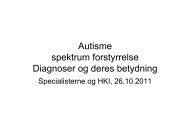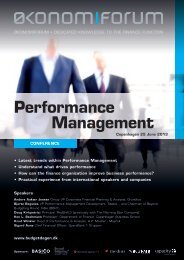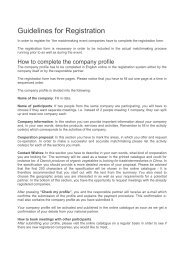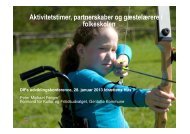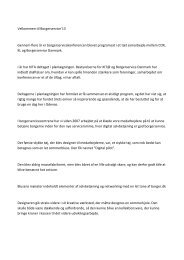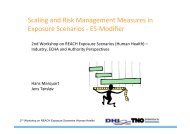Clusters are individuals - VDI/VDE-IT
Clusters are individuals - VDI/VDE-IT
Clusters are individuals - VDI/VDE-IT
You also want an ePaper? Increase the reach of your titles
YUMPU automatically turns print PDFs into web optimized ePapers that Google loves.
2. RESULTS OF THE BENCHMARKING OF CLUSTER MANAGEMENT<br />
ORGANIZATIONS<br />
In order to understand the characteristics of cluster management<br />
organizations and their interaction with cluster actors<br />
in more detail, more than 140 cluster management organizations<br />
were benchmarked in terms of the structure of the<br />
cluster, cluster management and cluster governance, financing,<br />
services provided by the cluster management organization<br />
and achievements and recognition of the cluster management<br />
organizations.<br />
This chapter presents the results of the benchmarking of cluster<br />
management organizations. The comparative portfolio<br />
is explained in chapter 2.1, while chapter 2.2 introduces the<br />
findings of the benchmarking in terms of the general characteristics<br />
of cluster management organizations and clusters.<br />
Chapter 2.3 presents five key findings that provide further insight<br />
into the characteristics of cluster management organizations<br />
and clusters. Chapter 2.4 presents key determinants<br />
for the impact of a cluster on business activities of cluster<br />
members.<br />
Table 3 shows the distribution of the clusters according to<br />
technology <strong>are</strong>as:<br />
TECHNOLOGY AREA<br />
NUMBER<br />
OF<br />
CLUSTERS<br />
Aviation and space 5 3.5 %<br />
Biotechnology 7 4.9 %<br />
Construction/building<br />
sector<br />
Energy and environment<br />
SHARE<br />
3 2.1 %<br />
23 16.1 %<br />
Key findings were made with regard to the difference between<br />
research- and industry-driven clusters, the impact of<br />
cluster management organizations on the cluster in terms<br />
of business and R&D activities, the effect of the technology<br />
<strong>are</strong>a on cluster characteristics and the impact of services<br />
provided by the cluster management organization on the<br />
development of the cluster.<br />
2.1 COMPARATIVE PORTFOLIO<br />
The comparative portfolio of this benchmarking project includes<br />
a total number of 143 clusters from eight countries<br />
(see Figure 2). The majority of the clusters were located in<br />
Germany (55 clusters), Denmark (26 clusters) and Poland (20<br />
clusters).<br />
Food industry<br />
(non-biotech)<br />
Health and medical<br />
science<br />
Humanities/social<br />
sciences, media,<br />
design and service<br />
innovation<br />
Information and<br />
communication<br />
Micro, nano and<br />
optical technologies<br />
New materials and<br />
chemistry<br />
Production and<br />
engineering<br />
Transportation and<br />
mobility<br />
11 7.7 %<br />
9 6.3 %<br />
15 10.5 %<br />
20 14 %<br />
16 11.2 %<br />
11 7.7 %<br />
17 11.9 %<br />
6 4.2 %<br />
Total 143 100 %<br />
Table 3: Number of clusters per technology <strong>are</strong>a<br />
Figure 2: Number of clusters per participating country<br />
16




